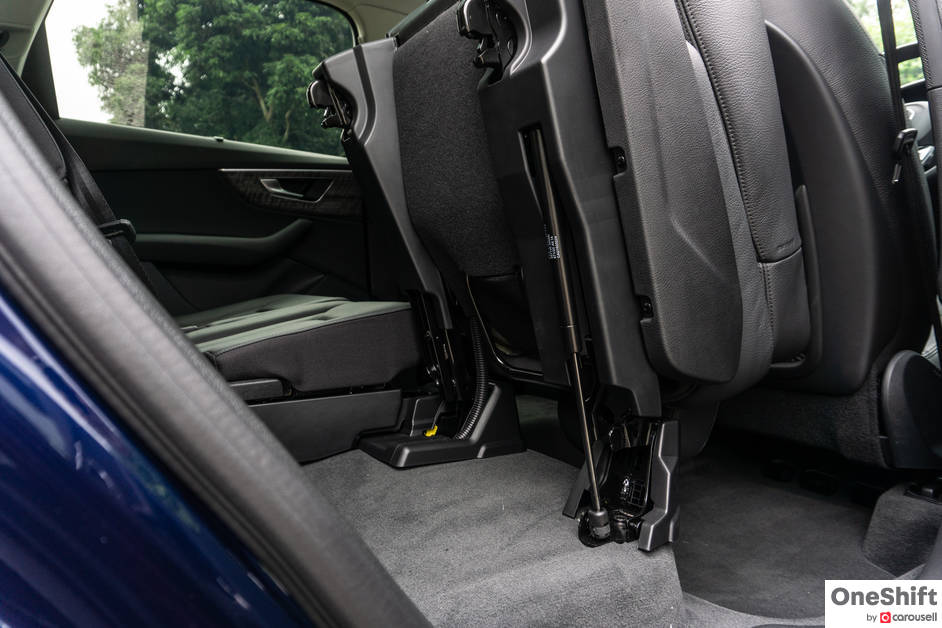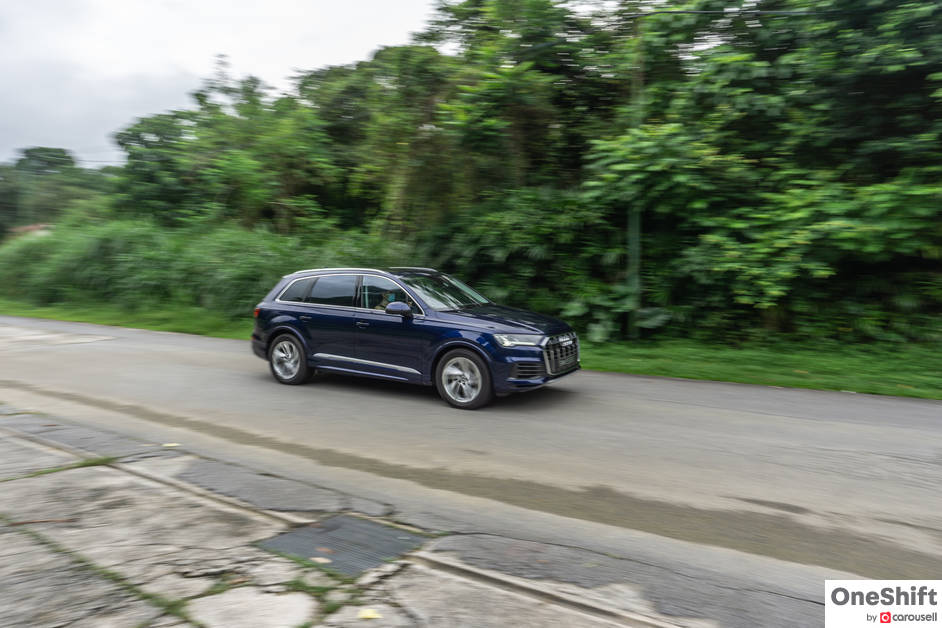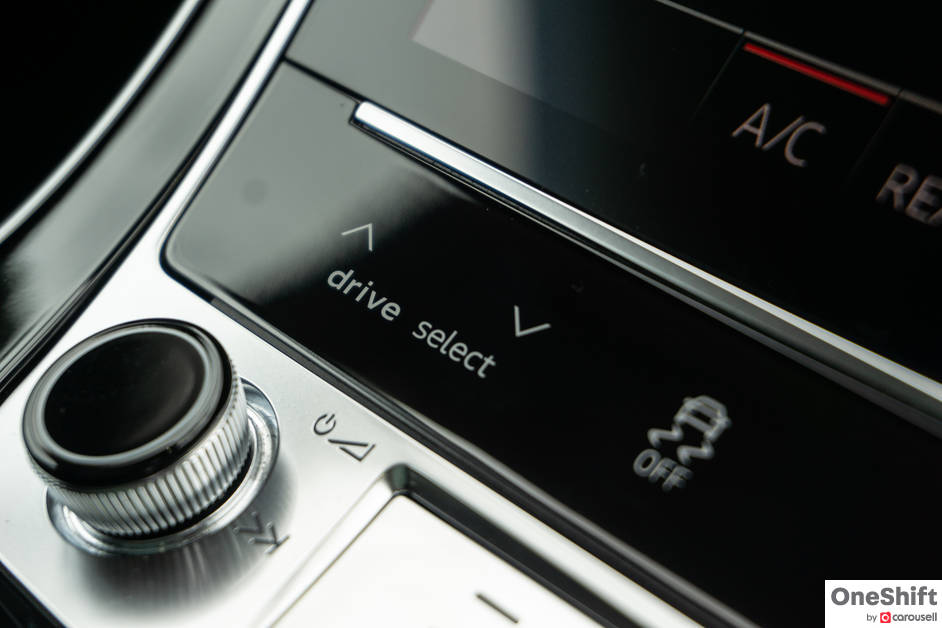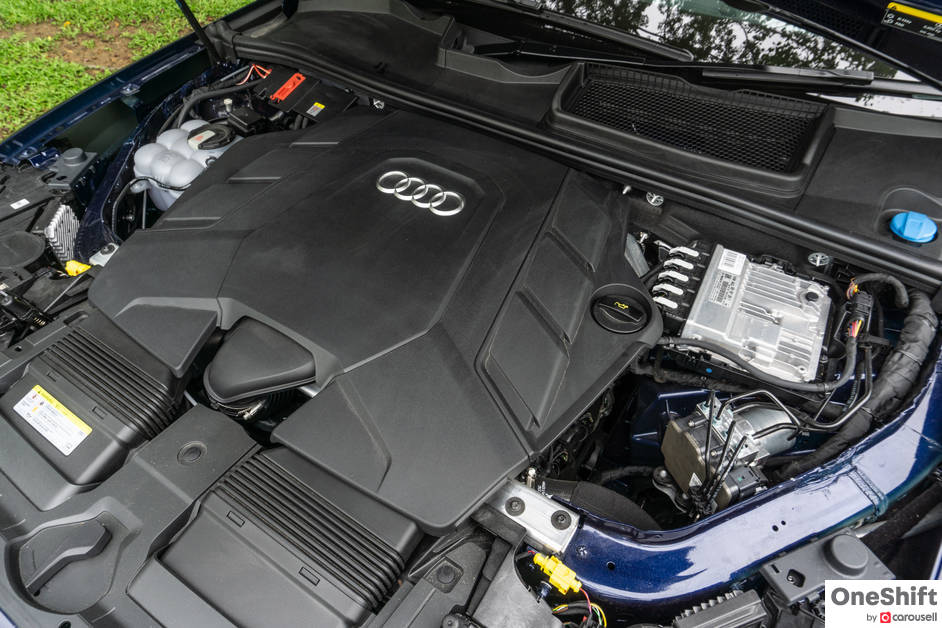Hewn From Quality
The facelifted Audi Q7 comes with a brand new engine and a revised interior. How does it stack up as a 7-seater SUV?


The Audi Q7 has a bit of a ‘soccer mum’ image. Thanks to its seven seats which will carry a football team and then some, it’s a great utilitarian car.

But it would be uncharitable to assess it merely as such, as Audi has not just made a big car, but one with impressive underpinnings and credentials. Its MLB platform is shared with the Lamborghini Urus, Bentley Bentayga, Porsche Cayenne and even the Volkswagen Touareg, which is an excellent base. Build quality and overall refinement is irreproachable: it is clearly a platform for the luxury class.

The version we drove has the ubiquitous 3.0 TFSI twin-scroll turbocharged engine, which interestingly is tuned for 50 Nm more torque than the same motor in the Cayenne and Touareg. That’s important, because short of having a muscular diesel, torque is crucial for a lumbering SUV. The Q7 is one of the last of the MLBs to receive this engine, replacing the old supercharged V6, but it was a productive wait.

It is smooth, feeling more at home here than in the Porsche, giving some serious shove to the Q7 - it will out accelerate both of its siblings in a 0-100 km/h sprint (5.6 seconds), leaving both behind. In fact, we scarcely believed the Cayenne (6.2 seconds) is the slowest of the trio, but it is (Touareg: 5.9 seconds).

This 2021 facelift also brought with it some minor changes to the exterior, including an octagon-shaped single frame front grille, a new sill area design and a rear chrome strip. It is a new family look, but is more cosmetic than anything else.
More significant are the changes on the inside. The dual touchscreen setup we have seen in the Q8 and other new Audis has been applied here as well. Compared to the old interior architecture, the previous screen looks like a bit of a joke. It did look more elegant and minimalist as a whole, though.

One can’t fault the materials used inside. You would think Audi may have cut some corners for the Q7 just because of the amount of real estate there is to cover, but every bit of the interior feels as luxurious as you would expect of a class-leader. The optional open-pore wood applied to the test car was a lovely touch, adding some organic elements to an otherwise sterile and no-nonsense interior.

Space is generous, as you would expect. Seven passengers can genuinely travel in comfort in the Q7 - yes, even for third row occupants who may tolerate a medium length journey, so long as second row passengers share their space a little. There are no dedicated air conditioning vents for the third row though.

Seats fold easily enough, especially with an electric folding third row, and buttons to activate this are placed thoughtfully around the cabin where you would need it the most. Small gas struts below the second row seats help to lessen the load of folding it when one accesses the third row - it shows Audi paid attention. With all seats folded you get 2,050 litres of loading space.

Audis typically have that detached driving experience, yet makes up for it with its unmatched bank vault-like build quality and inoffensive road manners. The Q7 has those good qualities, yet is surprisingly more involving than I expected.

In large part, the steering has more feel than we are used to, delivering an alacrity that is missing in so many of Audi’s cars, including the latest A6 we road tested (just don’t use it in Dynamic mode, which is too heavy). Could it be that all-wheel steering, which is a $5,651 option applied to the test car, made such a big difference? We have to try the normal steering to be sure. But it makes a lot of sense to tick this option, because for a car as large as the Q7 you can really feel the benefits, from parking, to making a U-turn or tackling corners.

Adaptive air suspension, which comes standard for Singapore Q7 3.0 TFSIs, for the most part gives the Q7 a ride quality that will unruffle the worst that our roads works could muster. Occasionally, it can feel a bit knobbly over sharper edged bumps and also give a slightly unnerving side-to-side rocking sensation.

Coming together with the new 3-litre turbo V6 is a mild hybrid system (MHEV) that recovers power during braking, switches off the engine as much as possible on the move and coasts at speed. It is one of the jerkier MHEV systems I have tried, especially when it comes to moving off as the engine comes to life. There is an uncomfortable lag and then a sudden surge when you press the throttle, so it takes delicacy to take off smoothly. It also makes brake modulation trickier because recuperation does numb the pedal feel. Not quite stress-relieving.

For all that fuss, the MHEV system doesn’t help much with fuel consumption. The Q7 3.0 TFSI is unsurprisingly a guzzler, averaging 6-7 km/l even with 60% of the test drive of some 300+km on expressways.
Comfortable, as quiet as a church and spacious, the Q7 3.0 TFSI is a great family car and will even satisfy the driver’s craving for speed and poise. While no hooligan, it handles neatly and will rapidly see off any taxi challengers easily. An unfinished experience served by the MHEV system as well as the car’s fuel inefficiency does unravel things a little, but these are not major setbacks.
Credits: Text and Photos by James Wong








Get the Best Price for your used car
from 500+ dealers in 24 hours

- Convenient and Hassle-Free
- Consumer Protection
Transparent Process
With No Obligation







